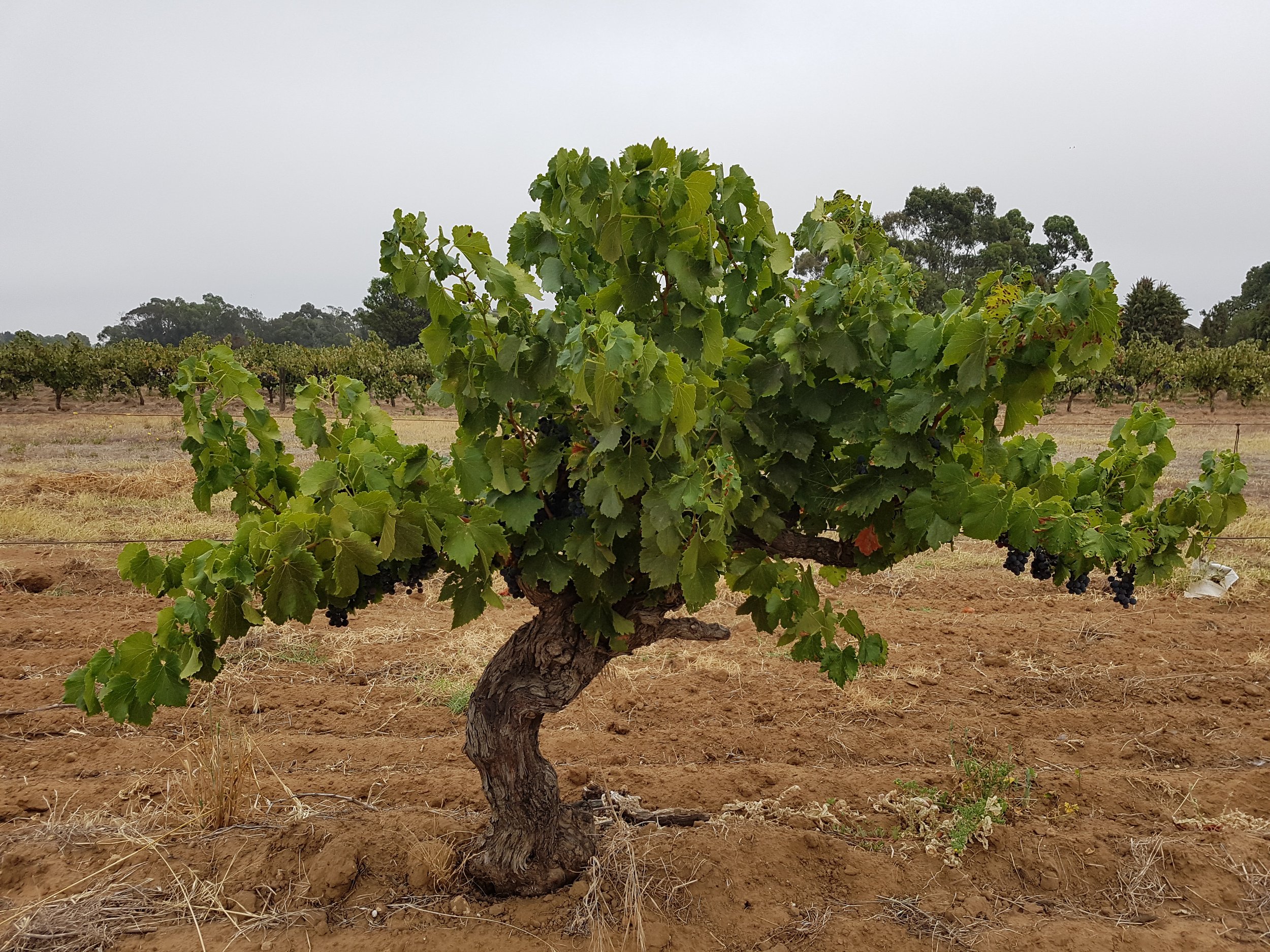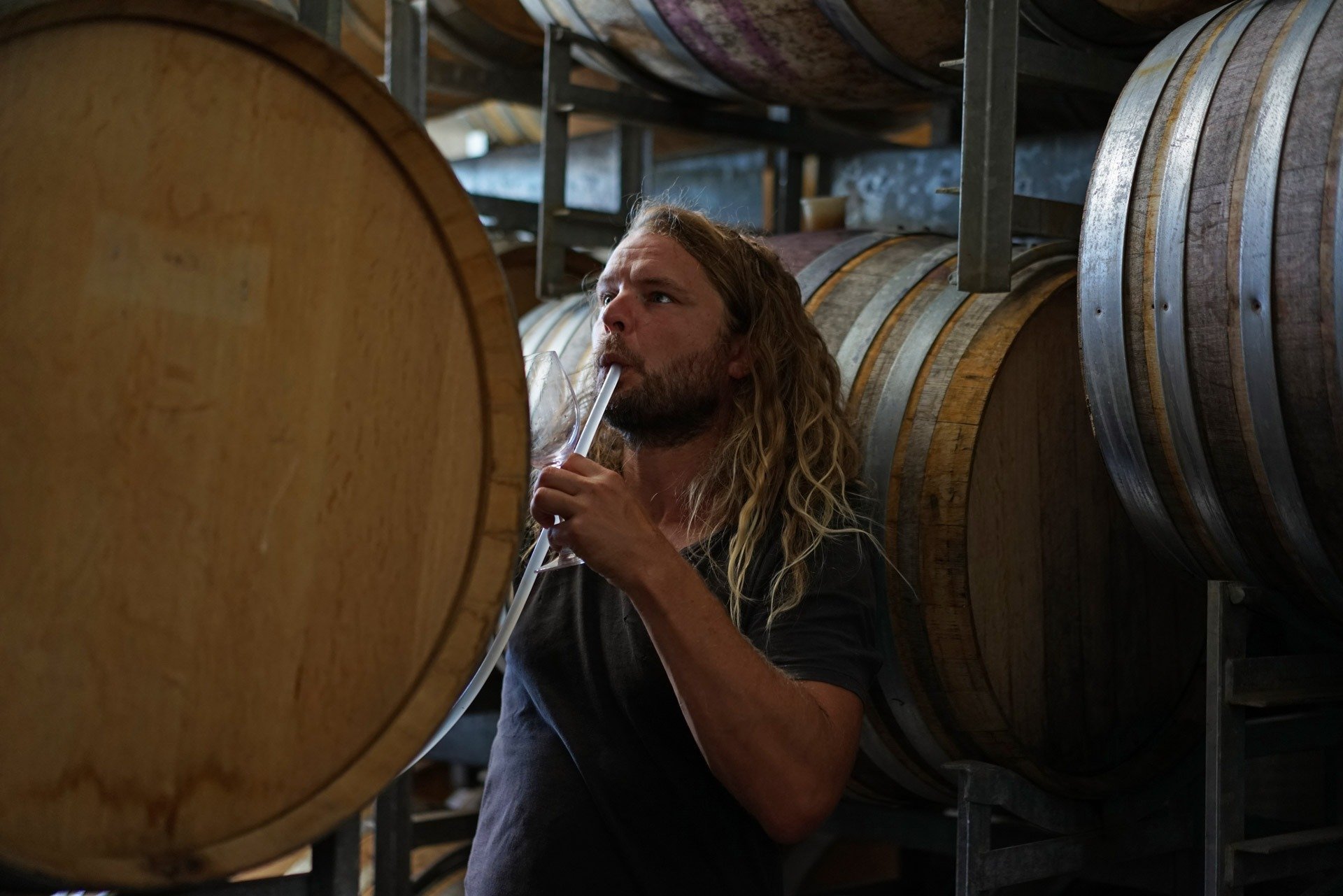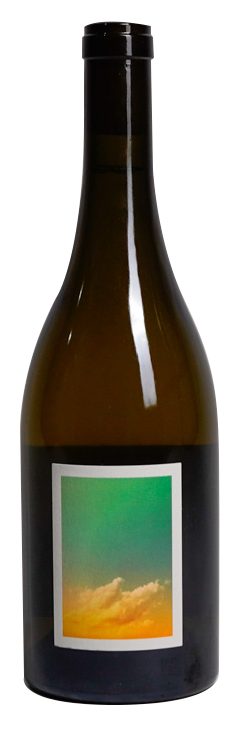Sven Joschke
Barossa Valley, South Australia
Heavily influenced by new-wave European styles - especially the crisp reds and whites of the Jura where he worked alongside Marin Fumey of Fumey-Chatelain - these are contemporary (predominantly) Barossa bottling of real elegance. Much of Sven’s deft touch can also be attributed to his vintages alongside Pete Schell (Spinifex) and Jason Schwarz (Schwarz Wine Co) where he learnt that Barossa does not necessarily need to be synonymous with high extraction or alcohol.
Not feeling the need to confine his range to one region, in true negociant style Sven seeks fruit from the cooler Adelaide Hills for his electric Chardonnay, Langhorne Creek for one of Australia’s finest and most sought-after Sangioveses, and the Jura itself for a very special oxidative white in some vintages. These, along with a swathe of yet-to-be-announced barrel projects form a compelling and exciting new opportunity for Vinify.
Assisted by his friend turned business partner, ex Movida head somm Andrew Marshall who lends more than just a stylistic hand, Sven and his label are simply the real deal.
2022 Chardonnay Pet Nat
After playing around with Chardonnay from the Barossa in V21 as a test run, Sven had to put it into a Pet Nat. It showed linear acidity and minerality with that classic Chardonnay depth.
Winemaking:
Fruit was picked at 10.9 baumé, ph super low, immediately bag pressed and chilled to facilitate settling of solids. Tank vinification temp controlled with a component of non-fermented juice kept separate for post fermentation dosage. Juice was then added back to the base wine once settled, bottled and allowed to ferment in bottle. No adds, fining or sulphites, just the juice.
Tasting Notes:
This pops with a limonata citrus freshness, yellow grapefruit and green apple. Not a complex wine, this is nevertheless a very clean Pet Nat, pithy and leesy in the right places and a fresh whip of acid to finish.
2023 Fume Blanc ‘La Gabriella’
Eden Valley provided for us in a difficult higher altitude ripening GI. Fruit came off later than expected but still delivered what we were after. Destemmed and pressed to the chilling tank, racked after 24 hours to puncheons and a small second use barrique for barrel fermentation. A component of fruit/berries was held separate and wild fermented in a new pure toast rotating Taransaud 600ltr barrel. 2 month skin contact. Greater varietal expression from V22 but still holding texture and flesh.
2022 Chardonnay 'La Justina’
In a round about way, we worked our back to Woodside after a disastrous 2020. Immaculate care was taken in the vineyard with up right shoot positions carefully held in place with catch wires, obnoxious weeds taken care of with undervine slashing. Put simply, maximum care and minimal external inputs.
Winemaking:
Barnard 76 Chardonnay clone at an elevation of 383m, 40 yo vines were handpicked and immediately destemmed and pressed. After 24 hours of cold settling pre ferment, juice was racked to 80% new and old French oak for barrel fermentation, remainder to tank. Juice sat on lees for 11 months, racked and bottled unfined and unfiltered with minimal sulphites.
Tasting Notes:
Adelaide Hills Chardonnay at its most interesting, this is a Chard of real complexity and texture, with quince, vanilla cream, nutty nougat and all manner of citrus fruits. Citrus pithiness flows onto the palate which has a great core of fresh acid. Long flavour.
2023 Chardonnay ‘La Lulu’
Buttery oak meets medium weight and minerality. Nabbed this one a little later in the vintage piece to gain riper fruit and to handle the oak and lees work.
Winemaking:
The fruit was destemmed and pressed to cold settling tank. Post cold stabilising, the juice was racked to 2 puncheons, 2 barriques (one new) and stainless steel tank. It was barrel fermented and went through 100% malolactic fermentation. It received batonnage twice a week for 4 four weeks, then was laid down to hibernate.
2022 Chardonnay ‘La Pete Sa Mere’
Perhaps the first Jura Chardonnay made by an Australian and sent back to Australia.
During his South Australian winemaking tenure, Sven Joschke struck up a friendship with young Jura vigneron, Marin Fumey, of Fumey Chatelain, which happens to be part of our portfolio. While Marin was working at Spinifex, he spent some time helping Sven out. Sven returned the favour with a vintage in the Jura. He produced a Chardonnay that spent two years in bottle before release.
Winemaking:
Beautiful Jura Chardonnay fruit, naturally ferment with only a touch of minimal sulphur at bottling. Whole berries were left to macerate for 6 days in a cool room, pressed to a milk vat to chill, racked and left to ferment in fiberglass tank. The wine sat on fine lees for a year, before racking and bottling.
Tasting Notes:
Not strictly a yellow wine, nor is it cloudy, it has a beautiful golden colour with ripe apricots, short bread pastry, a lovely saline and smoky minerality that the region is famous for. Plenty of mouth feel too. Very little made it back to Australia, so it's expected to go quickly.
2022 Muscat à Petits Blanc & Semillon ‘L’ambre’
Winemaking:
Muscat à Petits Blanc (52%) – Semillon (48%).
Component 1 – Valley Floor Semillon destemmed, wild fermented on skins and macerated for 2 months. Pressed to tank to settle, racked to neutral French oak and stainless steel tank.
Component 2 - 42 year old vine Muscat à Petits Blanc, destemmed and wild fermented on skins temporarily. Pressed to neutral French oak and stainless steel tank.
The two were blended after 8 months barrel maturation, then bottled unfined, unfileter, with minimal sulphur at bottling.
Tasting Notes:
A blend of a couple of strange bedfellows are Muscat Petits Grains and Semillon, but these work really harmoniously in a wine that’s all about the ginger, mandarin and spice of beautifully handled amber wines. Some salty macadamia and fresher citrus characters in here too, with a palate that’s very textured, chewy and clean.
2022 Viognier 'La Elizabeth’
This wine is destined for cheese and charcuterie hour. The fruit comes from the Yetti on the Valley floor. Sven gets first dibs on this one and therefore, this is the first pick of the season. Super low V24 yields meant concentration is high. The fruit was picked at a tender baumé of 11, which kept the acid tight.
Winemaking:
Taking note of what worked from previous years and keeping things experimental, we pulled the fruit off earlier. The fruit was de-stemmed, pressed, settled and partially barrel fermented in second use oak, and the remaining in tank. It had no lees work, but elements of brioche’ie fine lees come through in the finished wine.
Tasting Notes:
A variety from another era, but a wine that’s right up with the now. Yes, every typical varietal note applies, apricot, yoghurt, orange candies and marmalade, but it carries a tension and perkiness about it. Full bodied, maybe a touch oily, but made up for with grippy tannins and nimble acidity.
2023 Rose 'La Adeline’
Mourvedre and Grenache fruit was sourced from the local lads at the Valley Hotel from Stockwell Road on the Valley Floor and Biodynamic Cinsault from infamous Wayne at Smallfry Wines. Fruit was handpicked early in the morning to ensure fruit was cold, raced back to the winery with Mataro and Grenache destemmed and immediately pressed. Cinsault stalks were beautifully ripe so we took the opportunity to direct press bunches to give the Rose Wine a little extra tannin and herbaceousness.
Winemaking:
Cinsault juices were directly added to Mourvedre and Grenache juice in tank to settle for 24 hours and racked off solids. Part barrel fermented in a neutral French oak puncheons and in stainless steel tank. Both barrels were racked off fine and malo lees when dry to minimise lees contact and blended. Minimal sulphur added on bottling, no fining or filtration.
2023 Light Red ‘La Rouge Clair’
This wine is antithetic to traditional Barossa Shiraz.
Winemaking:
The shiraz fruit comes from the Krondorf vineyard, tended by Tommy Schiller. It was picked off at 10.5 baumé, destemmed and cold soaked for a couple hours. It was pressed, cold settled and racked to neutral French oak. The juice was barrel fermented then racked to tank post malolactic fermentation. The barrels were cleaned up, dried, then gravity filled. The wine was 100% barrel matured for 11 months.
Tasting Notes:
It has bright, electric raspberry red fruit, great texture, and length with a hint of oak adding structure.
2022 Grenache 'La Gillianna’
After losing his Valley Floor Grenache site in 2020, Sven thought it was impossible to source an equivalently immaculate parcel. Fortunately, Vine Vale’s sandy soils, formerly trellised old vines proved him wrong.
Winemaking:
The fruit was handpicked and whole bunch fermented using native yeast. Post carbonic maceration, whole bunches were foot stomped and pressed to tank to settle. 300 litres was racked to old and neutral French oak, the remainder was racked to stainless to settle and mature for 11 months. It was bottled unfined, unfileter, with inimal sulphur at bottling.
Tasting Notes:
Svelte Barossa Grenache very reminiscent of cooler climate versions of this noble variety. Very clearly Grenache with its red licorice and red raspberry fruits that play alongside fresh earth characters, mushroom and mellow spices. A very fine and refined Grenache, delicate but plentiful tannins and a wicked freshness about it.
2023 Sangiovese 'La Eleanore’
The fruit from a long-standing site in Langhorne Creek. Sangiovese can’t change its tannins stripes is the old adage… This is the result of Sven’s attempt at curbing the tannic structure of the variety—picking fruit nice and early, destemming it and separating it into two ferments. One pressed at 8 baumé, the other at 3. The idea was to limit exposure to seeds and extraction and let the fruit shine through. But it wasn’t meant to be, and the ferment still threw those beautiful dusty tannins, but successfully accomplished the heightened fruit spectrum he hoped for.
Winemaking:
The fruit comes from a single vineyard of 24 year old Sangiovese vines. It was de-stemmed and fermented in 3 separate parcels, pressed gently to minimises extraction from skins and seeds with the intent to let the fruit shine. Despite the semi early press, classic Sangiovese soft and dusty tannins still shine through. It was bag pressed to settling tank and racked post malolactic fermentation. The wine then went into neutral French hog heads and tank for 6 months. It was bottled unfined, unfileter, with inimal sulphur.
Tasting Notes:
Cherry spice, dusty dry tannins, perfume 'a la Dario the Mad Butcher'... serve chilled if required... Food? at times not needed, but think tuesday night pizza, wednesday penne parma rosa. Drink now, will age, never enough left to asses however.
2022 Syrah ‘Das Klaus’
A lean, super approachable Barossa Valley Syrah without the over extraction.
Winemaking:
The fruit was sourced from Tommy Schiller’s 25 year old vines in the Barossa Valley. 100% destemmed berries were fermented in stainless steel tank with minimal pump overs and punch downs. Free run was racked at 3 baumé straight to 2 French oak barrels for barrel fermentation, one brand new. Skins were pressed straight to tank and then racked off fine, and lees from the malolactic fermentation were racked off post ferment. It was bottled unfined, unfileter, with inimal sulphur at bottling.
Tasting Notes:
A Shiraz of real presence and composure, this is full of the black cherry and blackberry fruits that are a signature of old vine Barossa Shiraz, with Sven’s signature elegance. Not just fruit but licorice, cracked black pepper, game meats and savouriness. A lifted palate with a sturdy frame of acid and tannin. Barossa with more than a hint of the Rhone.
2022 Cabernet Sauvignon ‘Yiannis’
Winemaking:
The fruit grows on 30 year old vines on Sandy loam and clay soils on the valley floor. It was picked unconventionally early for traditional Barossans at 12.8 baumé, destemmed and wild fermented to approx. 2 baumé and gently pressed. Juice was fermented dry in neutral French oak hogsheads and stainless steel tanks. Post malolactic fermentation, the juice was racked and returned to clean oak. It was barrel aged for 11 months.
Tasting Notes:
If more Barossa Cabernet were made this way, there might well be more Barossa Cabernet! Undeniably Cabernet, this is bristling with the cassis and brambly fruits typical to the variety with stacks of roasting herbs and spice. Full of flavour, this has intensity without being heavy-set with briskness to its acidity, firm tannins and immense length.
2023 Fortified Syrah ‘V.S.V.P’
Taking a little inspiration from our Portuguese friends, here’s our Barossa Vintage “Port”. Also known as ‘Very Special Vintage. Port’.
Winemaking:
Early picked Syrah spread over three nally bins, foot stomped twice a day to extract maximum colour and tannin. Whilst we didn’t adopt the tradtional lagar approach, Motely Crue accompanied us on this stomping journey. Aged Brandy Spirit added at a mild baume of 3 arrested the ferment at 52gms residual. Must was immediately pressed to tank, settled and bottled s hortly after with zero fining or filtration and no oak. The result, a complex balance between savoury and sweet savoury, liquorice spice, lavender and violets.
Tasting Notes:
As the Portuguese do, savour for your offspring’s 21st birthday and once opened, enjoy shortly after. It’s a delicate wine after all….not a tawny. If not, enjoy now with a wedge of stinky blue.
As metnioed, in true Portuguese style, this is a wine made to age in bottle. however to drink now a freshca style with a salty cheese or rich chocolate desert is defintley the way foward...






















